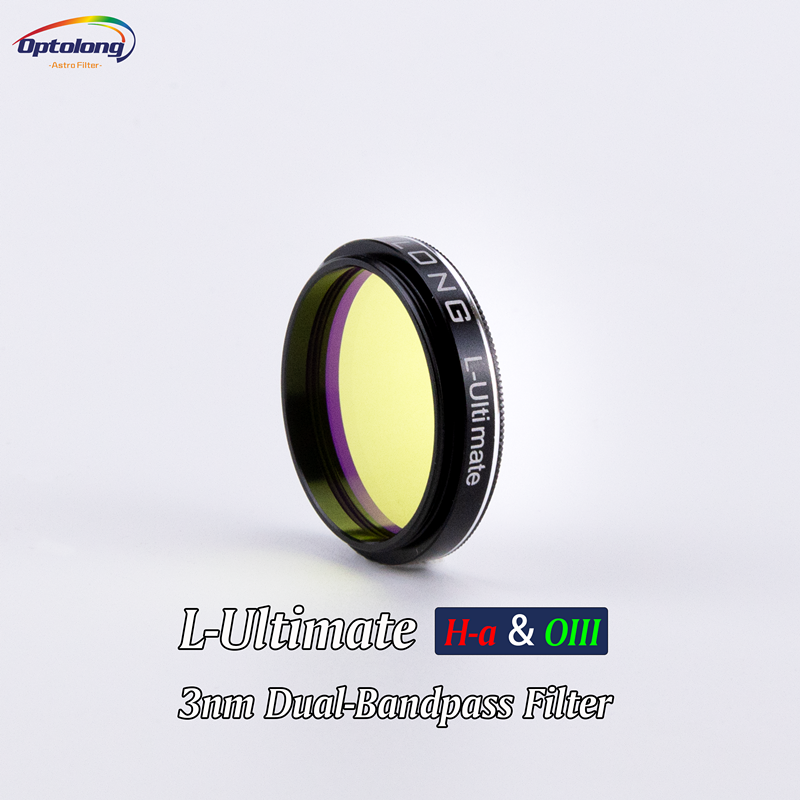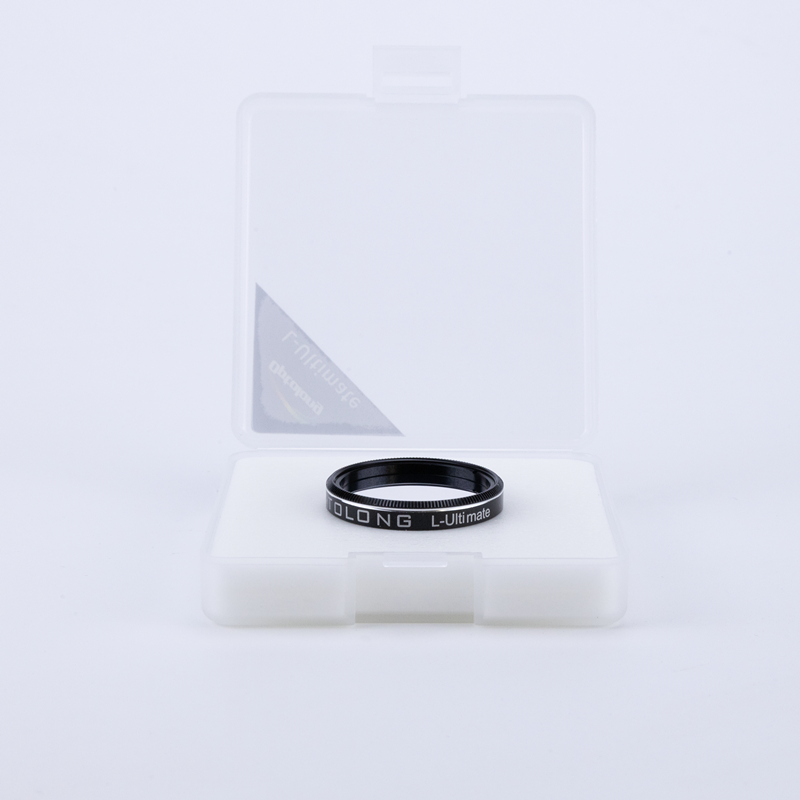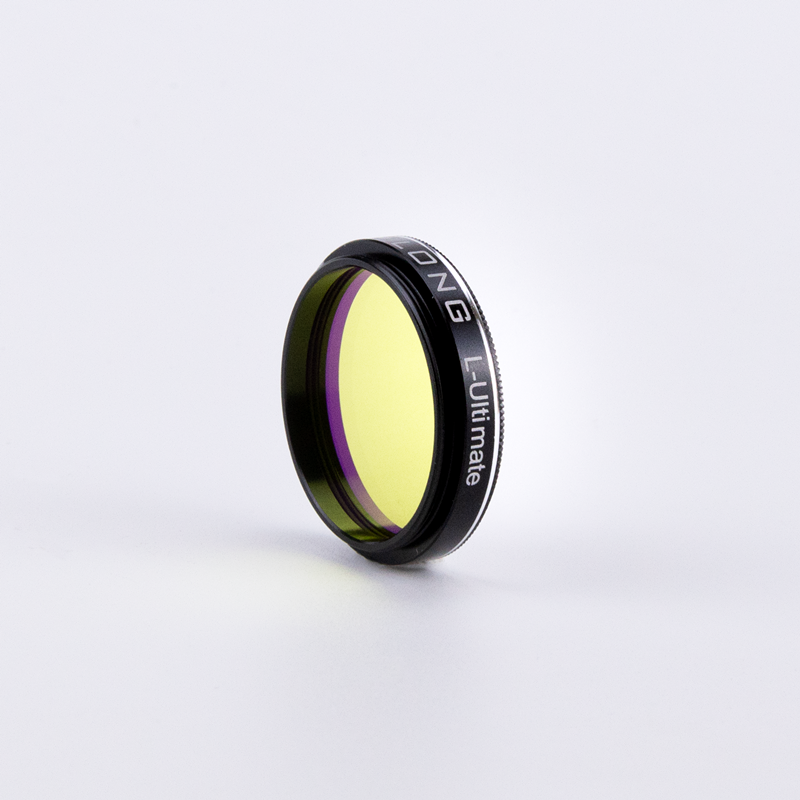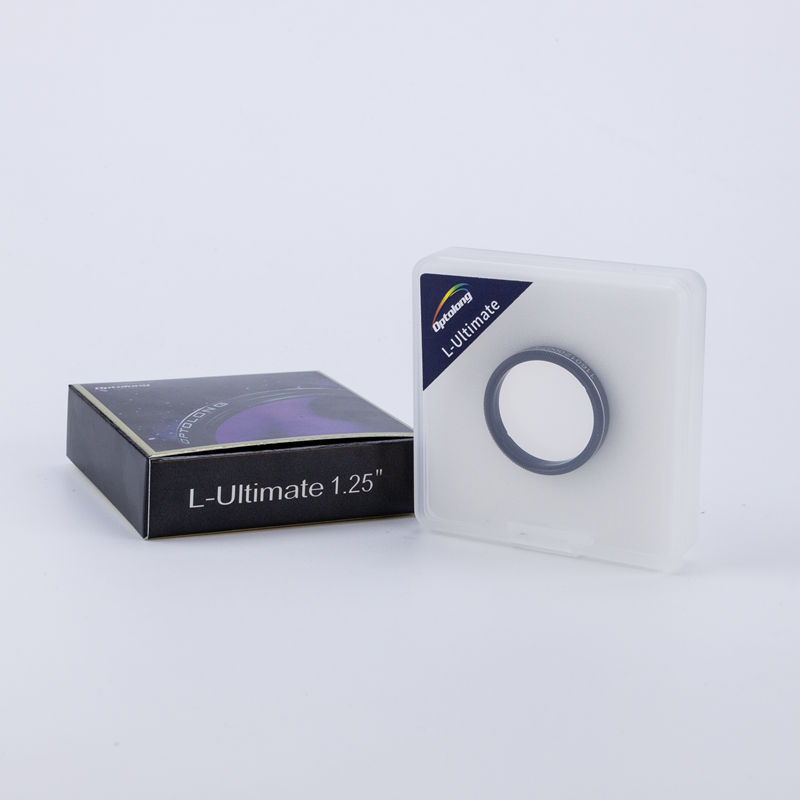-
Description
-
Specification
Opotlong L-Ultimate Introduction
You spoke and we listened! L-Ultimate 1.25" has been added.
It's about a 3nm dual band designed to drastically reduce the effect of light pollution, the 3nm isolates the nebulae's emissions into H-Alpha (red) and OIII (green-blue). It blocks light pollution, maximizes the signal from nebulae, and darkens the sky background. It also blocks artificial light from mercury vapor lamps, high and low pressure sodium vapor lights, and unwanted natural light caused by the emission of neutral oxygen in our atmosphere. Maximizes the transmission of the main emission lines of the nebula in OIII (496nm and 500nm) and H-alpha (656nm). Used with DSLR, color/MONO CMOS and CCD, however, this filter is not suitable for fast ratio systems.
The advantage of L-Ultimate is that it only passes through the emission lines OIII(500.7nm) and Ha(656.3nm), in which case all other light pollution emission lines are eliminated so that only the emission and reflection signals of the nebula are captured during imaging. Therefore, the sky background of the image is darker, and the contrast between the nebulae and the signal-to-noise ratio are improved to the greatest extent. In heavy light pollution areas, the product can also selectively filter light pollution and clutter signals through the emission lines of nebulae, and finally avoid the impact of light pollution on astrophotography.
It is different from the series of dual-narrowband L-eNhance and L-eXtreme in that L-Ultimate is a dual-3nm bandwidth filter that only passes through Ha and OIII emission lines. You will get a darker sky background, more contrast of the image and the suppression on stars. L-Ultimate has also been optimized in terms of halo performance, so that there is no obvious halo when shooting on a bright star object.
Features
| Sbustrate | optical glass |
| FWHM | OIII 3nm Ha 3nm |
| Blocking range | 300-1000nm |
| Blocking | >OD4 |
| Surface quality | 60/40 |
| Transmitted Wavefront RMS: | λ/4 |
| Parallelism | 30seconds |
Reference Spectrum
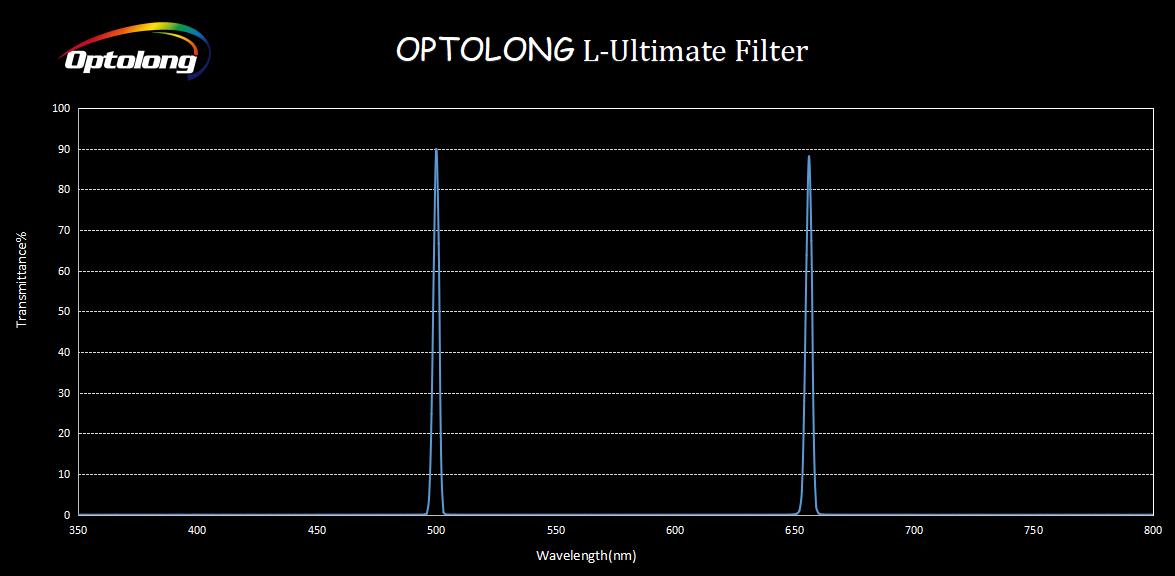
※This curve is only for reference, and is not used as the final product data.
Coating Technology
·Multi-layers anti-reflection coating
·Non-cementing optical substrate coating
·Optolong filter adopts precision coating based on Ion-assisted deposition coating technology for durability and resistance to scratching, as well as stability on CWL(central wavelength) no deviation affected by temperature change.
·Planetary rotation system offers precision and homogeneity of coatings ensuring high value on transmission of pass-band and Optical density of off-band.
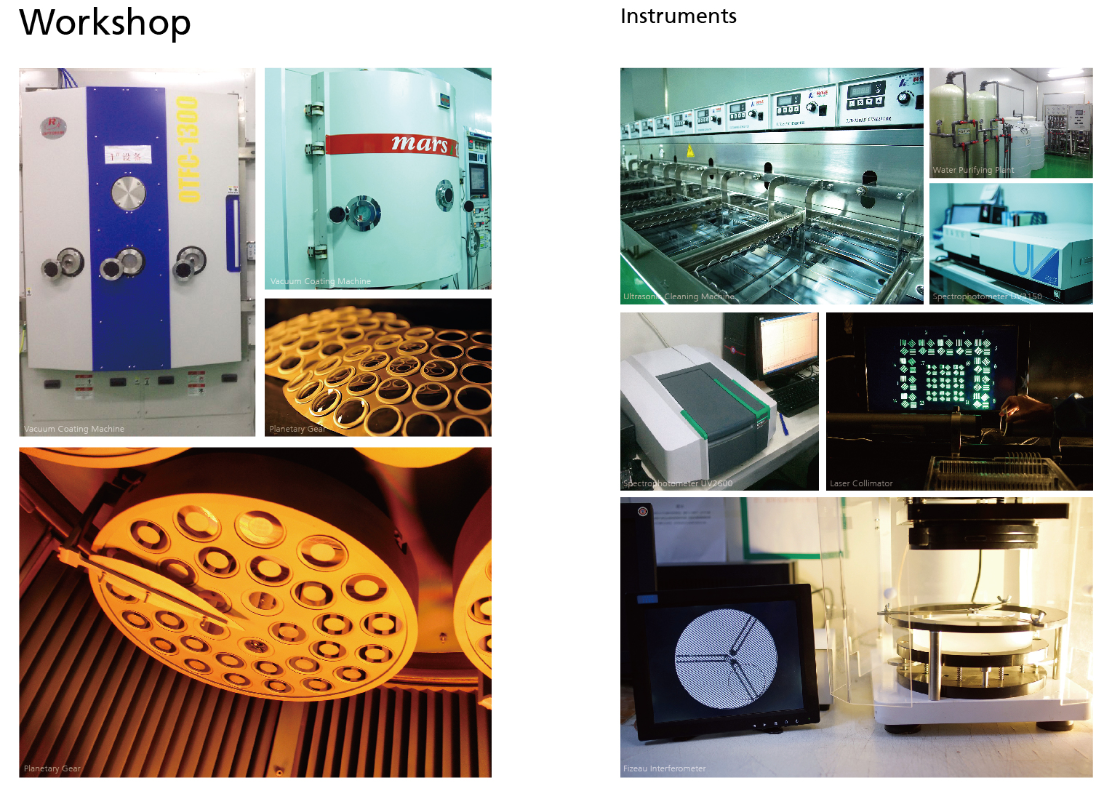
Gloable Price
| Gloable MAP of L-Ultimate Filters | Unit Price in USD dollars |
| 1.25" mounted | $289.00 |
Package

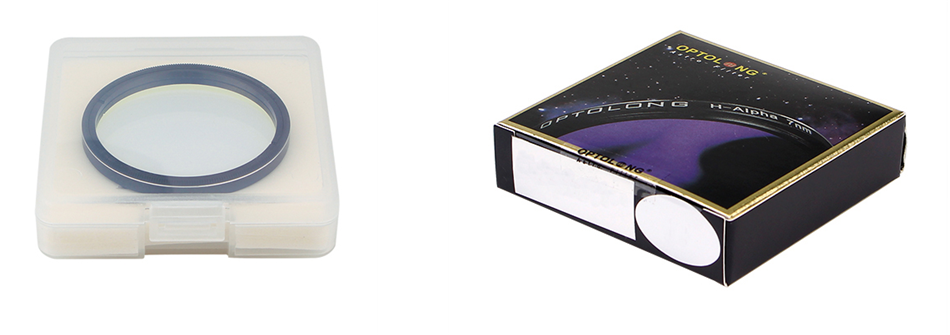
L-Ultimate Filter Performance
►Nebulosa Laguna M8
Telescopio: Askar fra600
Camera: Zwo Asi 294 mc pro
Montatura: Skywatcher AZ-EQ5
Autoguida: Zwo mini guide con zwo asi 224mc
Filtro Optolong L-Ultimate
Software d'acquisizione Sgpro
Credit: Gianni Lacroce (Italy)
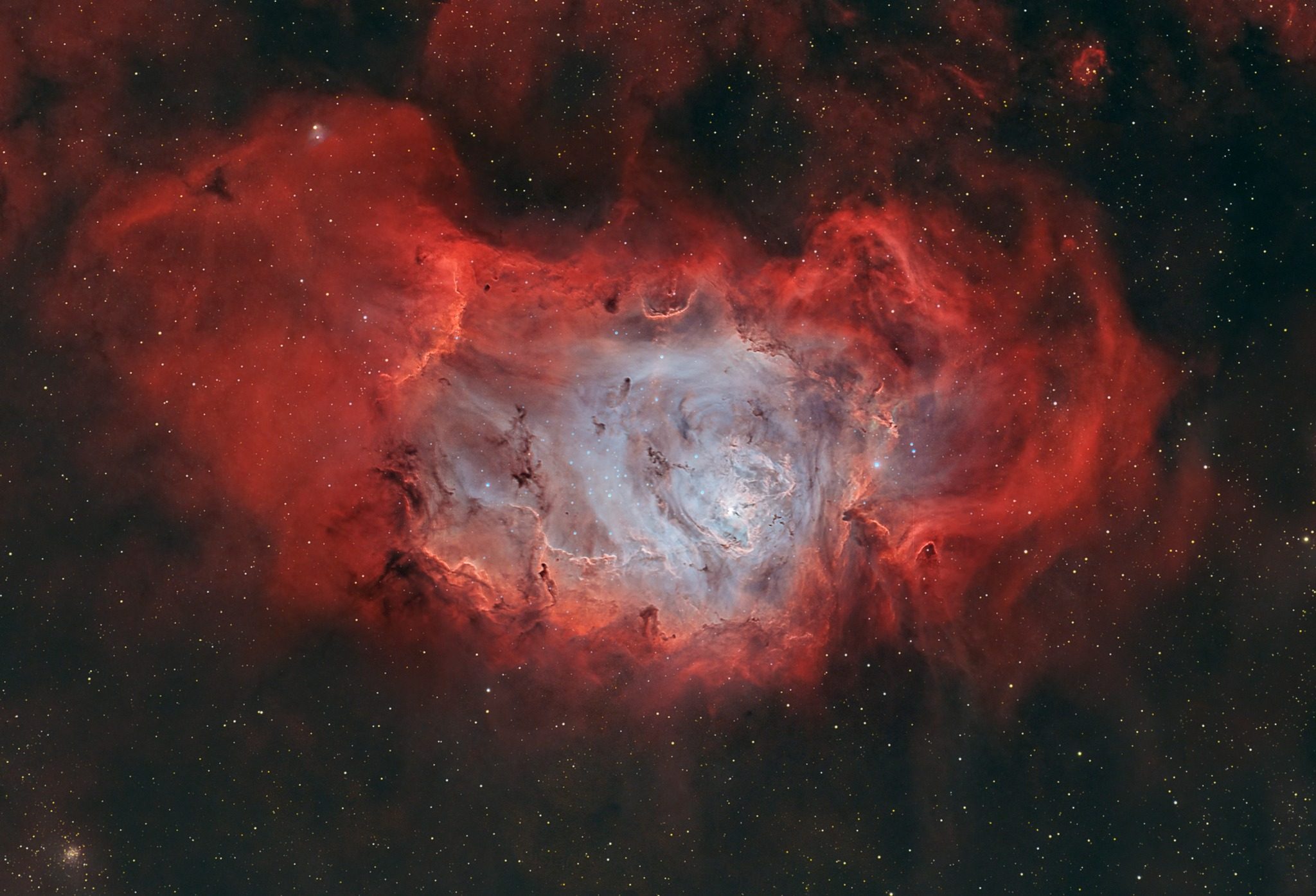
►The Pelican Nebula (also known as IC 5070 and IC 5067)
The Pelican Nebula (also known as IC 5070 and IC 5067) is an HII region associated with the North American Nebula in the Swan constellation whose gaseous formations bear a vague resemblance to a pelican, from which it takes its name. The Pelican Nebula is located near the first-magnitude star Deneb, and is separated from its more prominent neighbour, the North American Nebula, by a foreground molecular cloud filled with dark dust. Both are part of the larger HII region of Westerhout 40.
The Pelican is much studied because it has a particularly active mix of star formation and evolving gas clouds. The light from the young energetic stars is slowly turning the cold gas into hot gas and gradually advancing an ionisation front outwards. Particularly dense filaments of cold gas can still be seen, and among them are two jets emitted by Herbig-Haro object 555. In millions of years this nebula may no longer be known as the Pelican, as the balance and position of stars and gas will leave something that will look completely different.
Konus 200/1000 @960mm, f/4.8
Qhyccd Qhy168c @-5 °C
Sky-Watcher Eq6r Pro mount
Optolong L_Ultimate filter 122x300"
Svbony UV/IR-cut filter 114x30"
N.I.N.A., DSS, APP, PixInsight, PS
Ferrara (Italy)
Credit: Massimo Di Fusco (Italy)
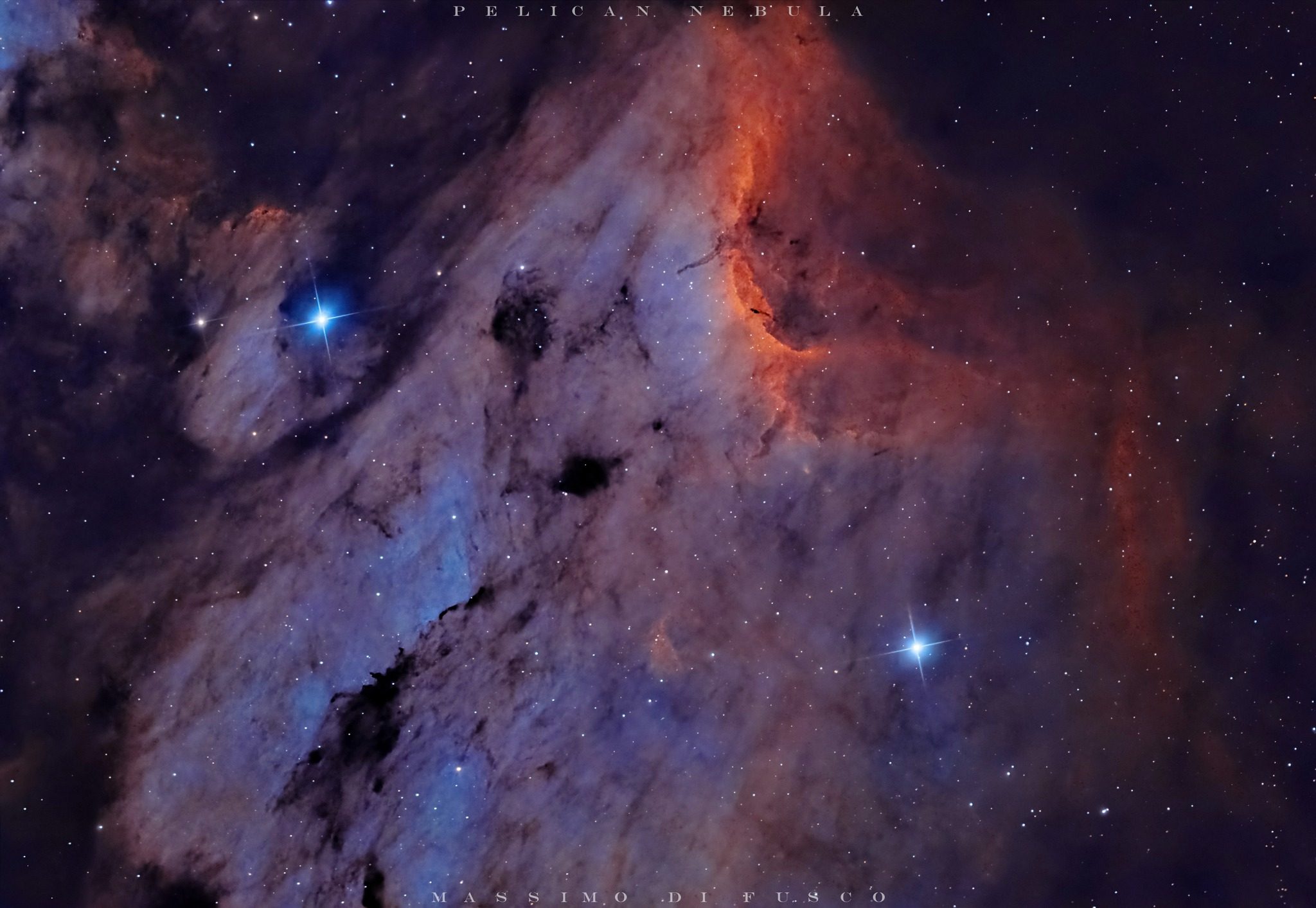
►WR 134
WR 134 is a variable Wolf-Rayet star located around 6,000 light years away from Earth in the constellation of Cygnus, surrounded by a faint bubble nebula blown by the intense radiation and fast wind from the star. It is five times the radius of the sun, but due to a temperature over 63,000 K it is 400,000 times as luminous as the Sun.
WR 134 was one of three stars in Cygnus observed in 1867 to have unusual spectra consisting of intense emission lines rather than the more normal continuum and absorption lines. These were the first members of the class of stars that came to be called Wolf-Rayet stars (WR stars) after Charles Wolf and Georges Rayet who discovered their unusual appearance.
Asi2600mc pro + L ultimate
Credit: Cédric Humbert
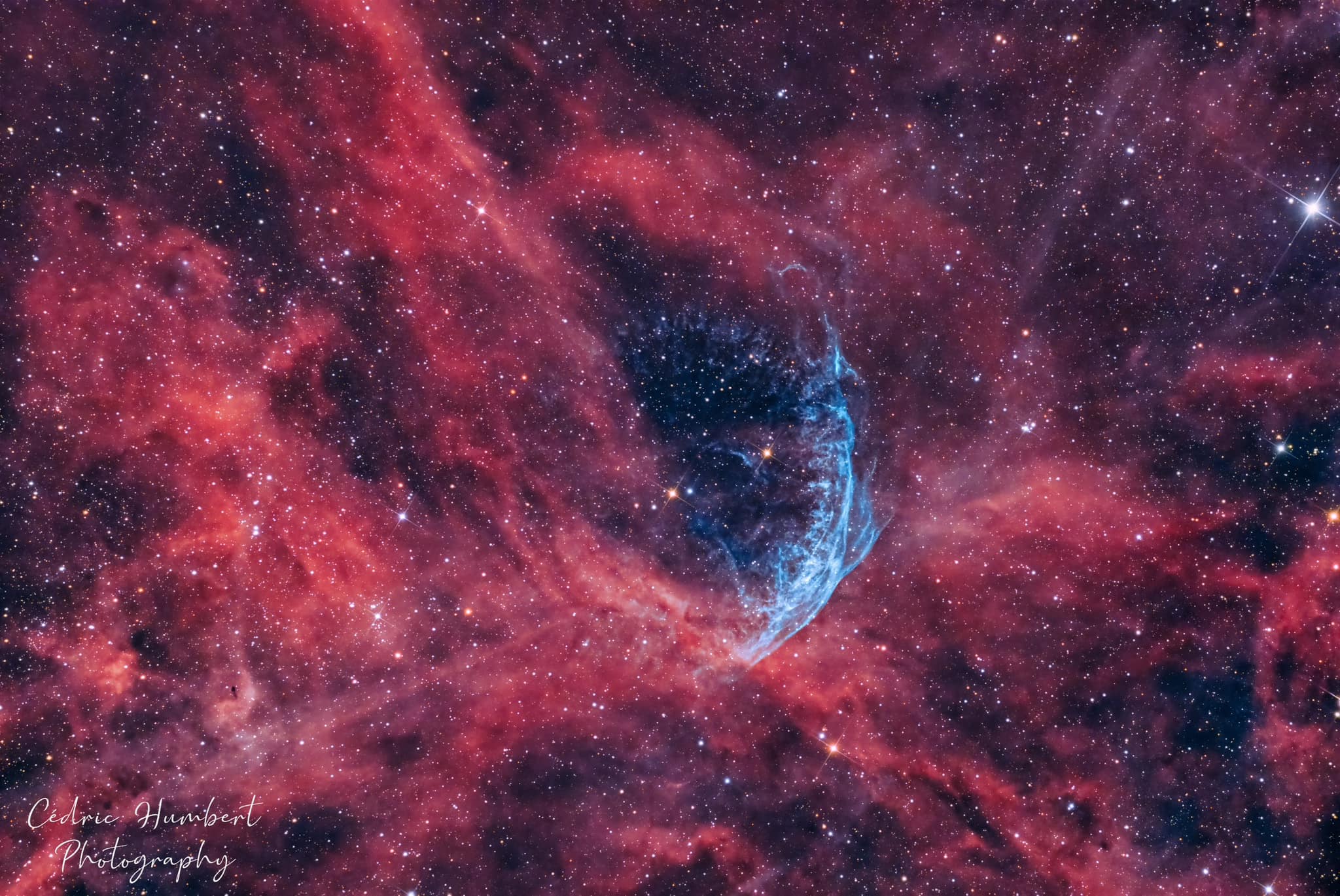
►Thor's Lightning and the Angelo’s nebulae (Martino-Sainty Object 1)
Version OIII/RGB
We have photographed the LDN 1400 object that hides the SNR G150.3+4.5, aka "Thor's Lightning."
A collaboration on data acquisition allowed us to highlight the SNR signal but also to unveil an OIII shell around the star "CI Camelopardalis".
The StDr team, which supported us on this project, analyzed our data and helped us to register this discovery, allowing us to open the Martino-Sainty Object (MarSai O) catalog.
MarSai O 1 was named the "Angelo's Nebula", in homage to my father who has passed away 2 years ago.
- My equipment and exifs:
RGB exifs: 269x300s
Alpha exifs : 83x600s
Takahashi FSQ85-EDX scope and ZWO ASI2400MC camera and Optolong L-Ultimate filter for the Hydrogen Alpha signal.
Sky-Watcher EQ6-R Pro mount driven by AsiAir Plus
- Yann 's equipment and exifs :
Exifs Oiii : 60x600s
Takahashi FSQ106-EDX4 scope with reducer, and ZWO ASI2600MM camera and Antlia 3Nm 36mm filter
Sky-Watcher EQ6-R Pro mount driven via NINA.
Total integration 46h15
Pre-processing was done with Siril and post-processing with PixInsight and Photoshop.
Image Credit: Nicola Martino (France)
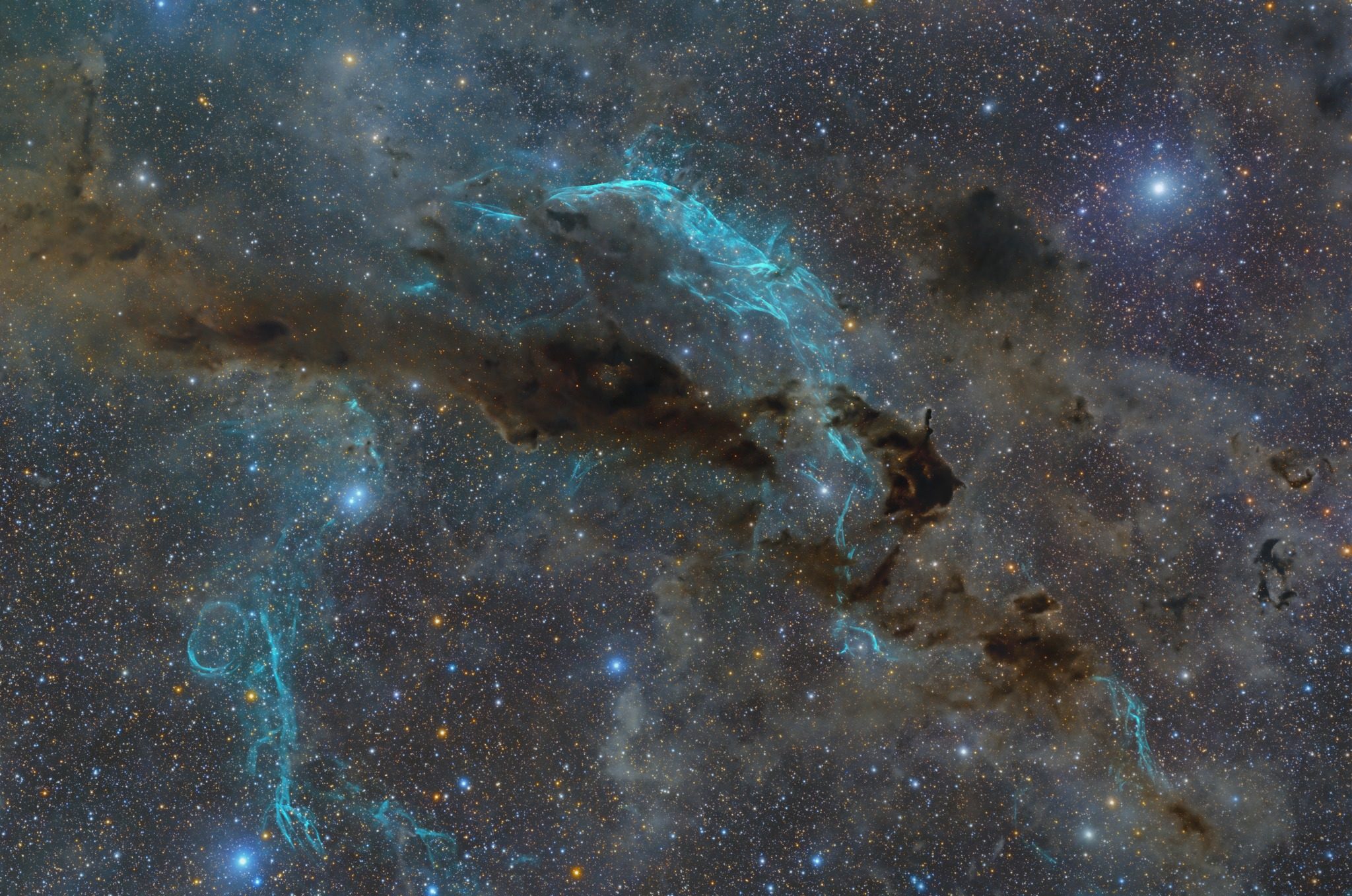
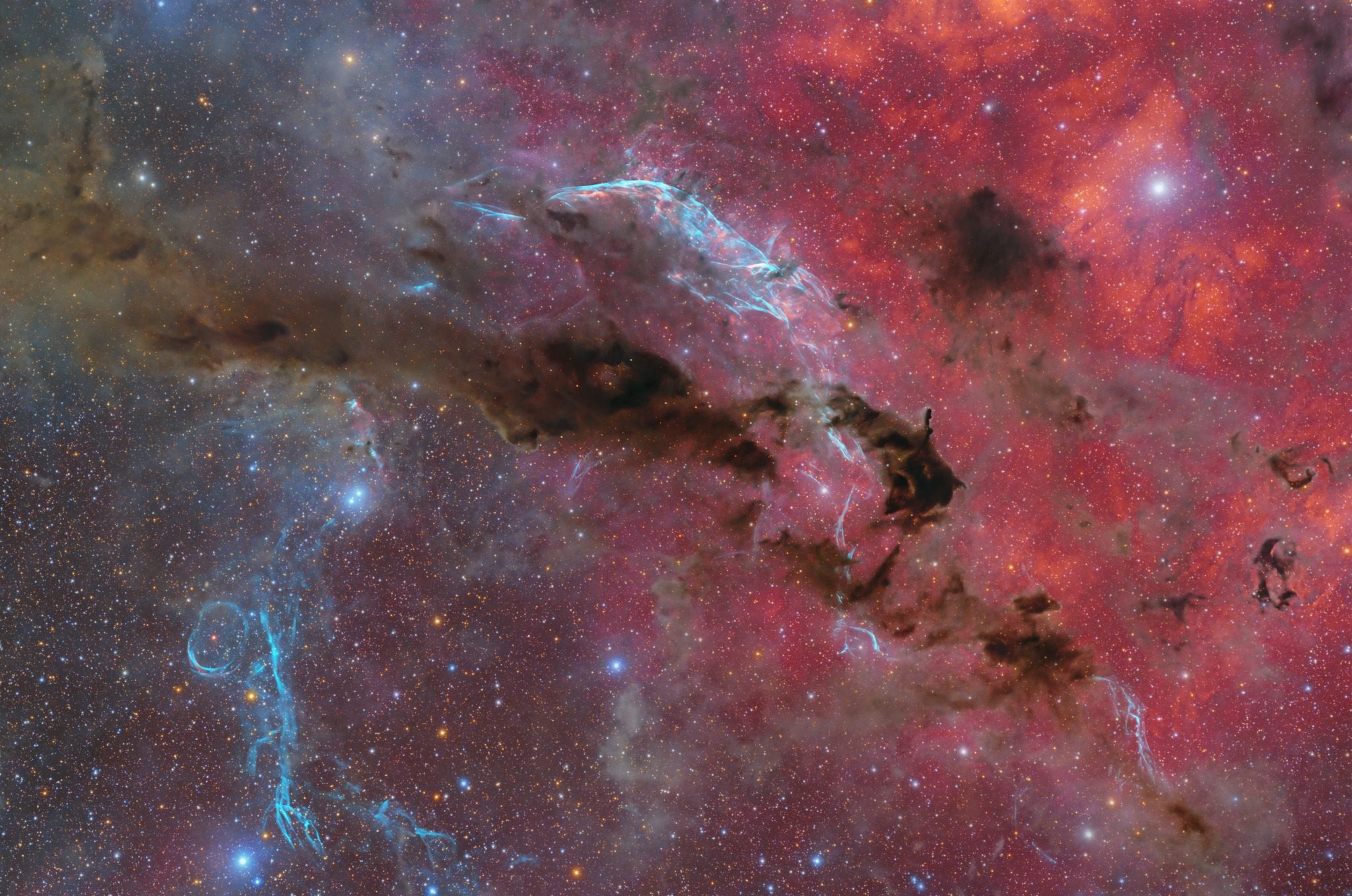
►The Cigar Galaxy (also known as M 82 or NGC 3034)
Messier 82 (also known as NGC 3034, Cigar Galaxy or M82) is a starburst galaxy approximately 12 million light-years away in the constellation Ursa Major. It is the second-largest member of the M81 Group, with the D25 isophotal diameter of 12.52 kiloparsecs (40,800 light-years). It is about five times more luminous than the Milky Way and its central region is about one hundred times more luminous. The starburst activity is thought to have been triggered by interaction with neighboring galaxy M81. As one of the closest starburst galaxies to Earth, M82 is the prototypical example of this galaxy type. SN 2014J, a type Ia supernova, was discovered in the galaxy on 21 January 2014.
Technical data:
204*180s G1600 T-20
34*120s G1600 T-20
79*900s G1600 T-20
Equipment:Skywatcher 254 F5 @1033mm (F4)
Skywatcer 0.87x Coma Corrector
QHYCCD QHY294c
L-Pro Optolong
Optolong L-Ultimate
ZWO OAG + ASI290mm Mini Ioptron CEM70
Software: N.I.N.A. + PHD2
Shots by Francesco Roots (Italy)
Processing by Mirko Tondinelli (Italy)
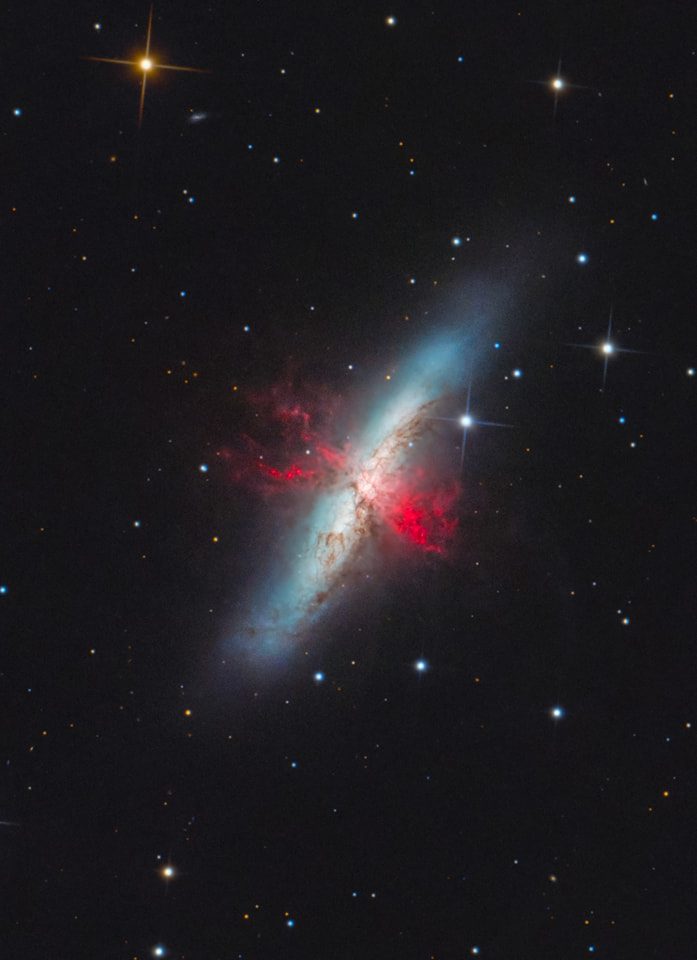
Warm prompt
●About color: due to the influence of ambient light, color difference of the display and flash photography, the color of the product may have some color difference. Detailed color is in accordana with the final product.
●About coating: the interference filter will show different colors under different light, which is a normal phenomenon. Please refer to the material object.
●About the style: in order to improve the product, the change of design/appearance/parameters has not been updated in time. Please see the subject produce.
●About the description: the series of this product have the same material, technology and design, different sizes only, please note.
Optolong L-Ultimate filter features:
★1.25" mounted

